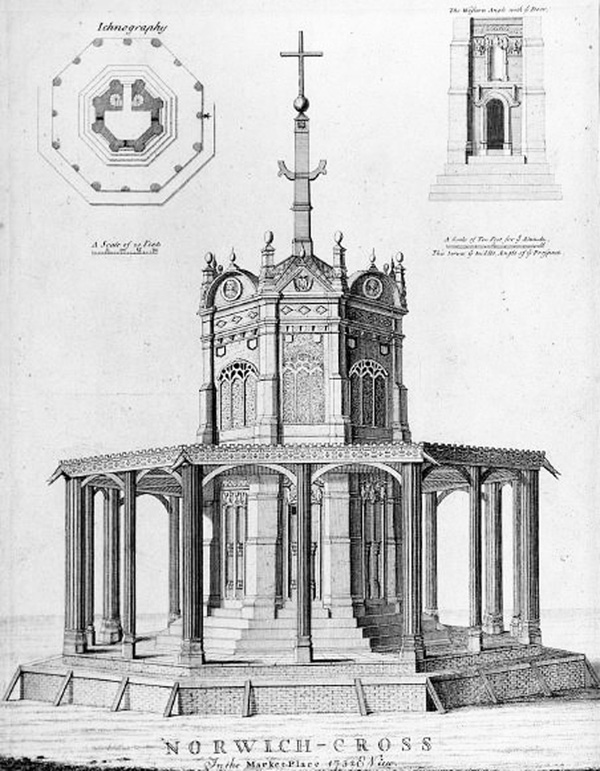Frances &
Michael
Holmes


When visiting Norwich market you may have noticed the bright red outline of a large octagon embedded in the ground between rows D and F. If you have ever wondered what it represents, you may be surprised to discover that it was once the location of the City’s 16th-century market cross.
What is a Market Cross? Historically a market cross was erected on a site where permission had been granted (typically by a monarch, bishop or baron) to hold a regular market or fair. Where the structures have survived they take numerous forms. Many are simple, carved spires, crosses or obelisks. Others, such as the Chichester Cross, are large ornate covered buildings. Although the majority are made from stone, the crosses were also constructed from other materials. In fact one of the county’s best-known surviving market crosses, located at Wymondham, is fabricated in wood. Norwich Market
Norwich market was first established at its current location at the end of the 11th century. Until the early 14th century, in common with many other areas, it operated under a licence granted from the monarch. However, this all changed in 1341 when King Edward III visited the City to attend a jousting match. Somewhat fortuitously, his arrival coincided with the completion of Norwich’s new defensive wall ‘…for the honour of the King’. He was very impressed by the new structure and in gratitude he granted the franchise of the market to the City’s rulers in perpetuity – a right which still survives to the present day.
